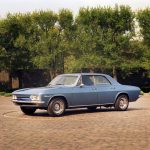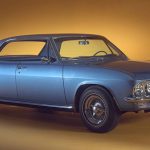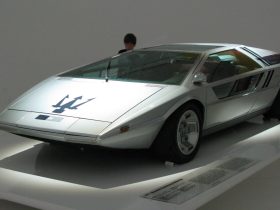General Motors has been working with electrifying vehicles for most of its existence. One of its most promising experiments was in the 1960s with the Corvair rear-engine, air-cooled car. The experiment, dubbed the Electrovair, made a battery-electric version of the Corvair. Twice.
The Corvair, designed to compete with Volkswagen and its popular low-cost, air-cooled engines, was one of the more innovative vehicles to be produced by GM in the 1960s. Unfortunately, it was also the political subject of a certain consumer safety advocate hoping to make a name for himself in his crusade. While Nader’s movement for safety did change Americans’ look at automotive safety, it unfairly targeted the Corvair as being inherently unsafe.
Regardless, in 1964 before Nader’s book was published, the first-generation Corvair underwent an experimental fitment replacing its engine and fuel tank with a battery pack and electric motor.
That first prototype wasn’t made a big deal of to the public and was mainly an engineering and technology experiment. The Corvair was a perfect candidate for this experiment, having a front trunk for batteries and a rear engine compartment for an electric motor and some complex switchgear. Those early experiments seemed to be a success as a second model Electrovair was made and introduced to the public as the Electrovair II.
The Electrovair II was based on a 1966 Corvair Monza four-door model. Not much about the vehicle’s bodywork or interior was changed for the new electrified version, but under the sheet metal, a host of changes had been made. The flat-six engine was replaced by an AC induction motor. This motor was capable of 115 horsepower, helping to make up for the car’s added weight (nearly 1,000 pounds) compared to its 95-horsepower standard model. The batteries powering the Electrovair II were state of the art as well.
At the time, the most power-dense (and expensive) batteries were silver-oxide in chemistry. These were used by NASA in its space program, for high-cost hearing aids, and more. Because they could be easily molded or even made into flexible electronic units, they were a top choice for power delivery in complex electronics. In the Corvair, they offered 532 volts of simple water-based chemistry that was largely fireproof. At the time, in the mid-1960s, lithium was barely experimental and a long way away from getting a Nobel Prize (2019) for changing the world.
GM made several claims when showing off the Electrovair II, including a 0-60 mph sprint time of 16 seconds and an 80 mph top speed. Range was rarely mentioned, however, as it was a mere 40 or so miles, though claims of up to 80 miles were sometimes made. Also rarely mentioned was a battery life of only 100 cycles (roughly 4,000 or so miles of driving).
For their part, though, GM pushed the Electrovair as a technology showcase instead of a production option. The Chevrolet Electrovair and Electrovair II paved the way for the Electrovette concept in 1978 and the EV1 in the late 1980s.
The first Electrovair is lost to time, probably stripped and repurposed for the Electrovair II, which is currently at the GM Renaissance Center in Detroit, Michigan.
Photos courtesy of General Motors archives.










